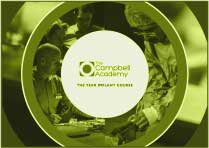
Last night, as we usually do, Tom (my friend and marketing & Academy director at the practice) and I hosted and coached our under15’s football team training.
It’s 8pm-9pm on a Thursday night on the Astroturf close to my house.
It always feels like a drag when it gets there, especially when it’s dark and raining and especially when it’s half term and you’re trying to motivate 12 boys when there are supposed to be 19 to make them better at a sport that you know very little about.
So, I don’t have a great deal (read any) football knowledge or experience, but I have a little bit of understanding about how other people have built great teams.
Last night we started with what’s called an arrival exercise. It’s where you put a straightforward practise (this one with 2 boys and 6 cones) and you start them doing a simple straightforward technique-based section.
You tell those guys to teach the other guys when they come what they’re doing and all of a sudden there’s 6 sets of these things going on.
It allows you to get ready for the rest of the stuff that you’re doing but it also gives them responsibility for their own training and their own improvement.
Then you add a complicated practise (we’re not allowed to call them drills anymore according to the FA) into the mix and you spend 15 or 20 minutes getting them to do that but not before you’ve explained, again, to the guys that what we’re trying to do is build a team of football players who are skilful who can play out from the back.
We want them to be able to be brave, to take possession of the ball from their teammates to move it along to the right place.
That sounds simple and easy but it’s actually a lot easier just to ‘shell it’ as fast and as far as you can up the pitch which does no good to anybody.
After that we put them into what’s called a ‘real game scenario’ where we have 1 goal (obviously with our goalkeeper in it) and two teams, 1 defending, 1 attacking, 1 being heavily pressed and 1 trying to break the press using the skills that they’ve just practised in the last 2 practises.
But before we do this, we ask the boys “what do you have to do to improve to allow us to be the team that plays out from the back”.
I now give the boys a little sheet with their own improvement points on it and ask them to take responsibility for improving those a little bit.
Once you’ve shown someone the vision of the direction that you’re travelling and then given them tools to practise to be better at moving in that direction and then clearly suggested to them what their individual parts of that are and then enabled them to do (adding in a bit of accountability together) what do you think happens?
Are they likely to get better or are they likely to get worse?
Now you try.
Blog Post Number - 3247





Leave a comment